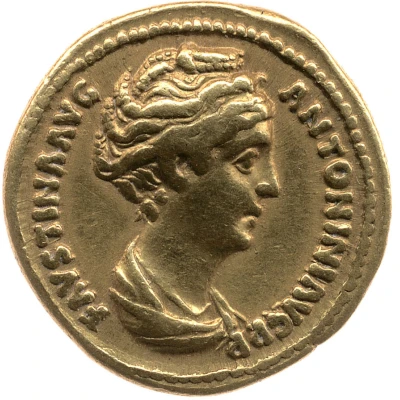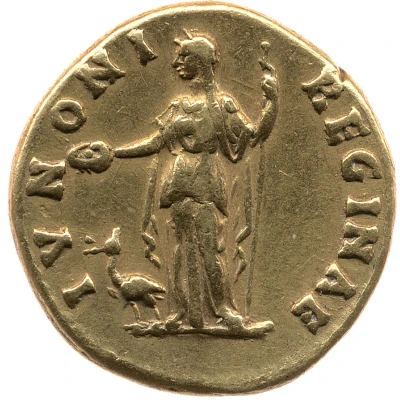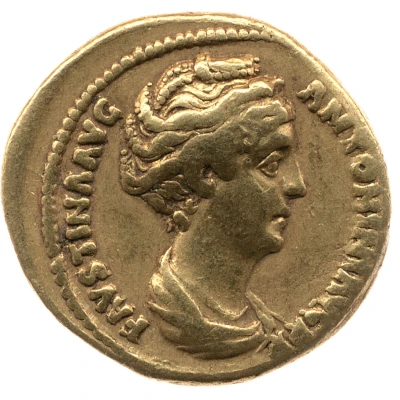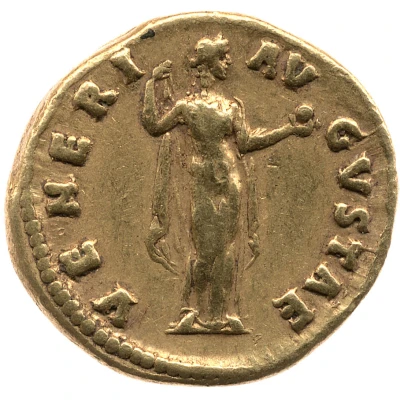
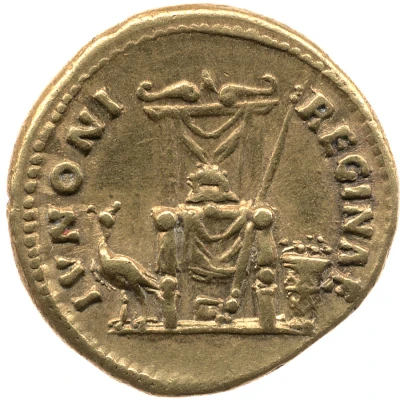

© Trustees of the British Museum
Aureus - Faustina the Elder IVNONI REGINAE
| Gold | 7.1 g | - |
| Issuer | Rome › Roman Empire (27 BC - 395 AD) |
|---|---|
| Emperor | Antoninus Pius (Titus Aelius Hadrianus Antoninus Pius) (138-161) |
| Type | Standard circulation coin |
| Years | 138-139 |
| Value | 1 Aureus = 25 Denarii |
| Currency | Denarius, Reform of Augustus (27 BC – AD 215) |
| Composition | Gold |
| Weight | 7.1 g |
| Shape | Round (irregular) |
| Technique | Hammered |
| Demonetized | Yes |
| Updated | 2024-10-05 |
| Numista | N#260314 |
|---|---|
| Rarity index | 100% |
Reverse
Throne, draped and ornamented, on which is a wreath; against it, rests transverse sceptre pointing upwards, to left, peacock, to right, basket of fruit.
Script: Latin
Lettering: IVNONI REGINAE
Translation:
Iunoni Reginae.
To Queen Juno.
Comment
Mass varies: 7.1–7.13 g;Example of this type:
Trustees of the British Museum
Source:
Online Coins of the Roman Empire (OCRE)
Interesting fact
One interesting fact about the Aureus coin featuring Faustina the Elder is that it was issued during her reign as empress, which lasted from 138 to 140 AD. Despite her relatively short time as empress, Faustina the Elder was known for her influence on her husband, Emperor Antoninus Pius, and her efforts to promote the cult of the Roman state goddess, Venus. The coin's inscription, "IVNONI REGINAE," translates to "of the queen, Juno," highlighting Faustina's association with the goddess Juno, who was revered as the protector of the Roman state and the wife of Jupiter. The coin's gold content and intricate design also reflect the wealth and power of the Roman Empire during this period.
